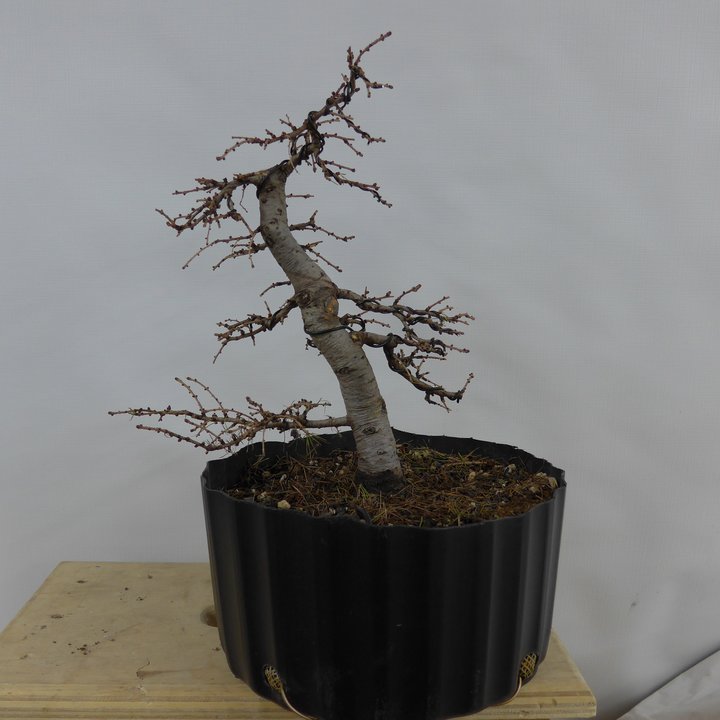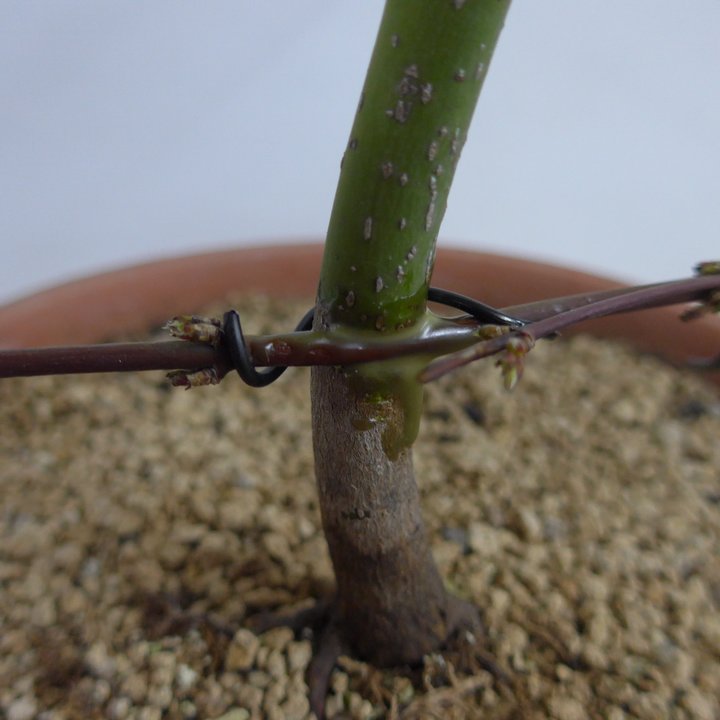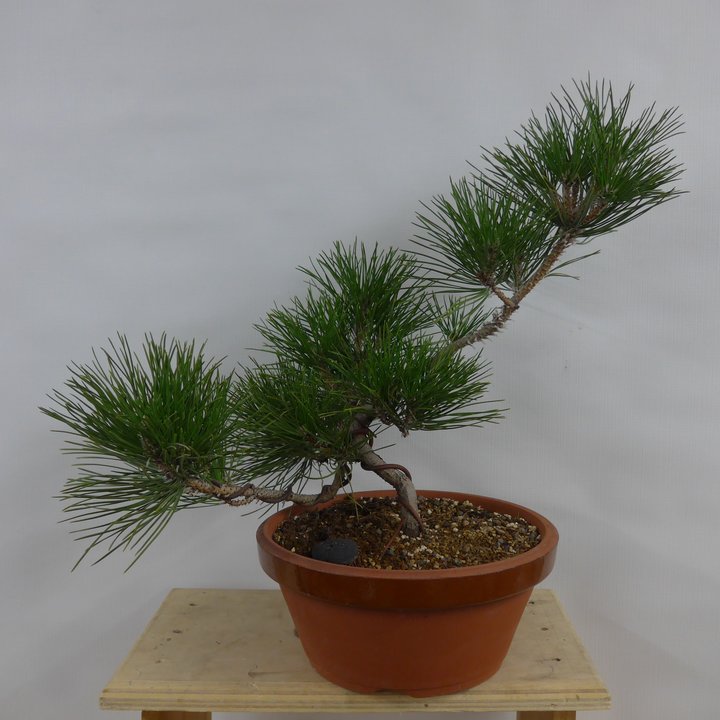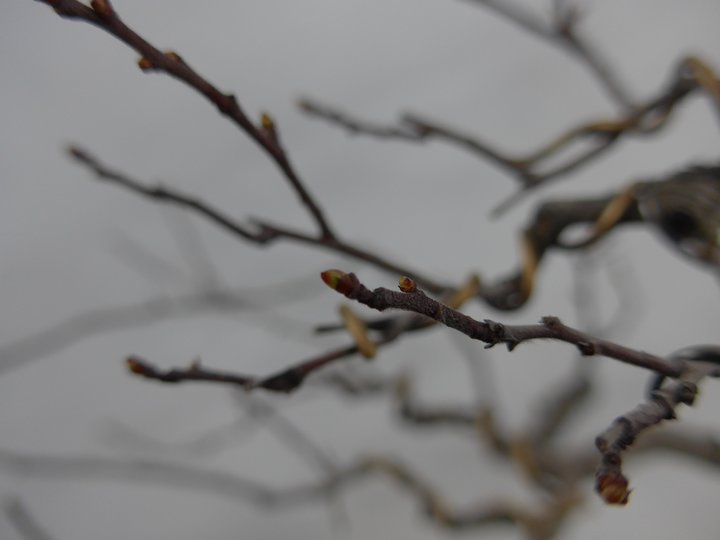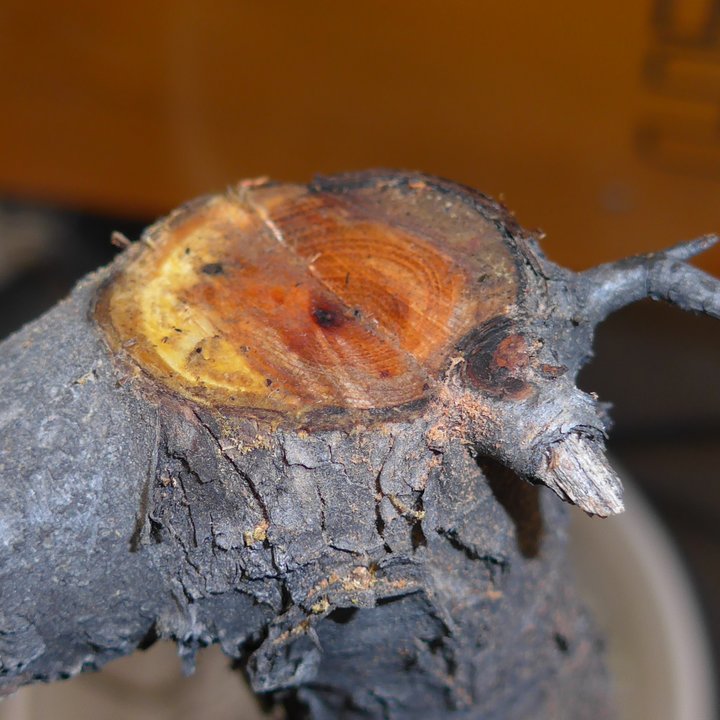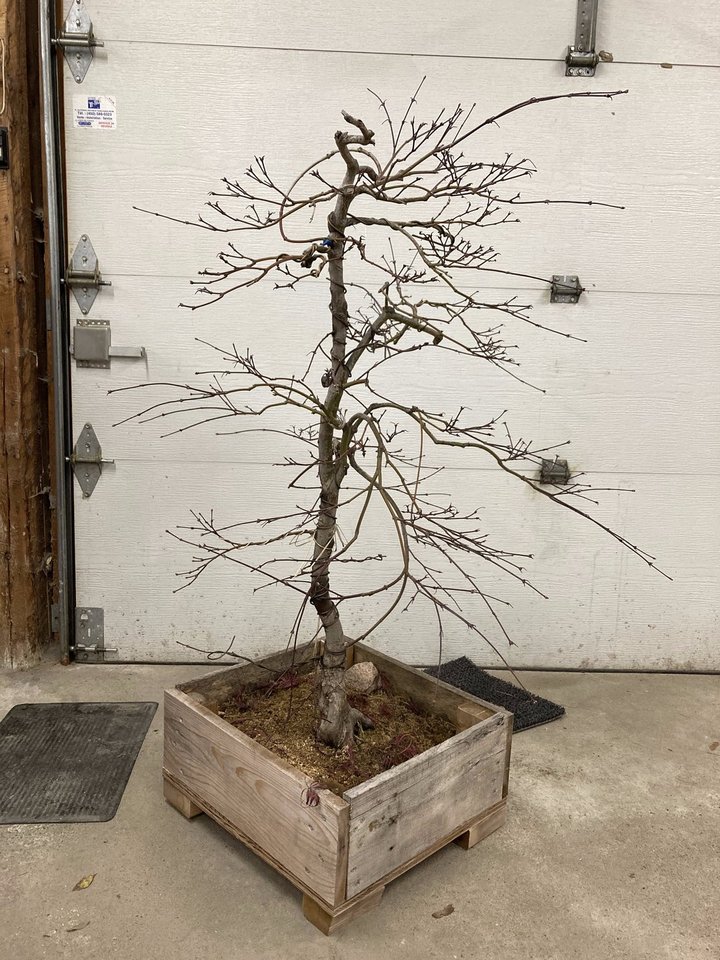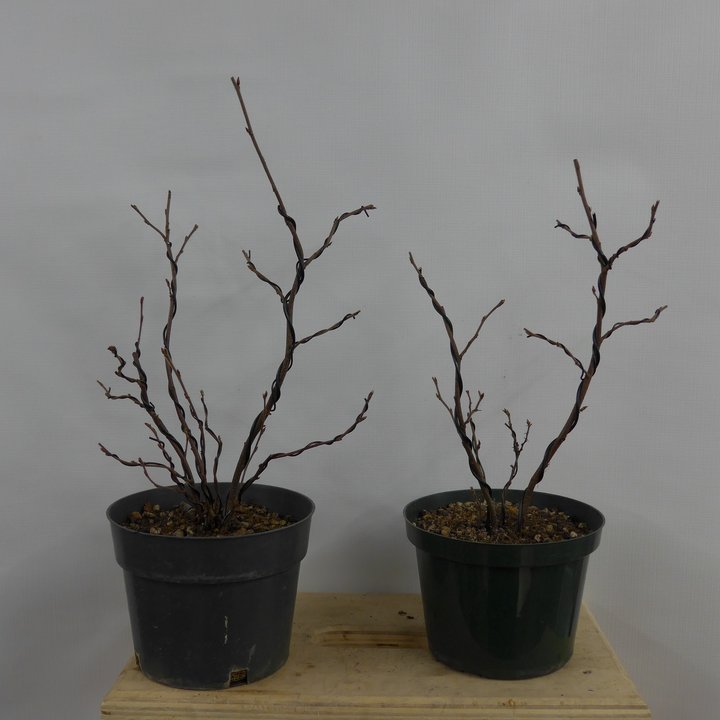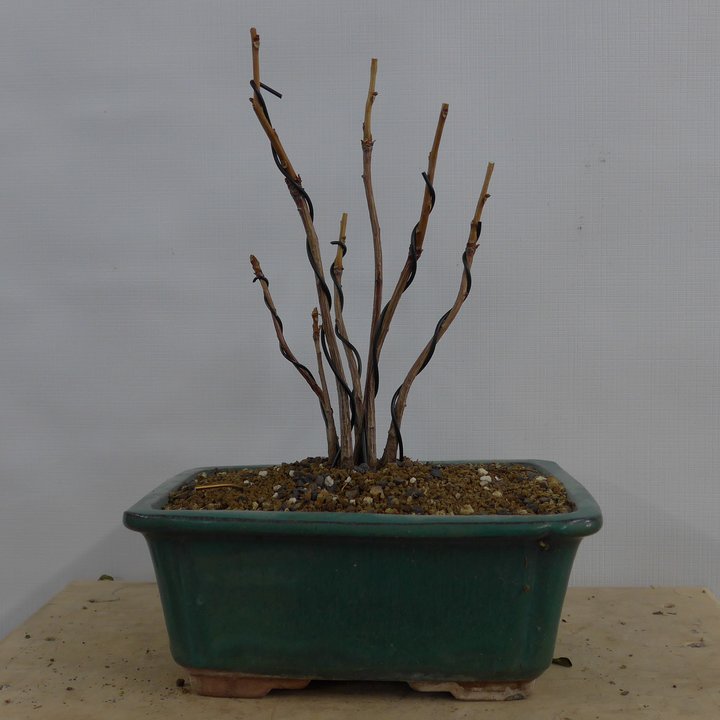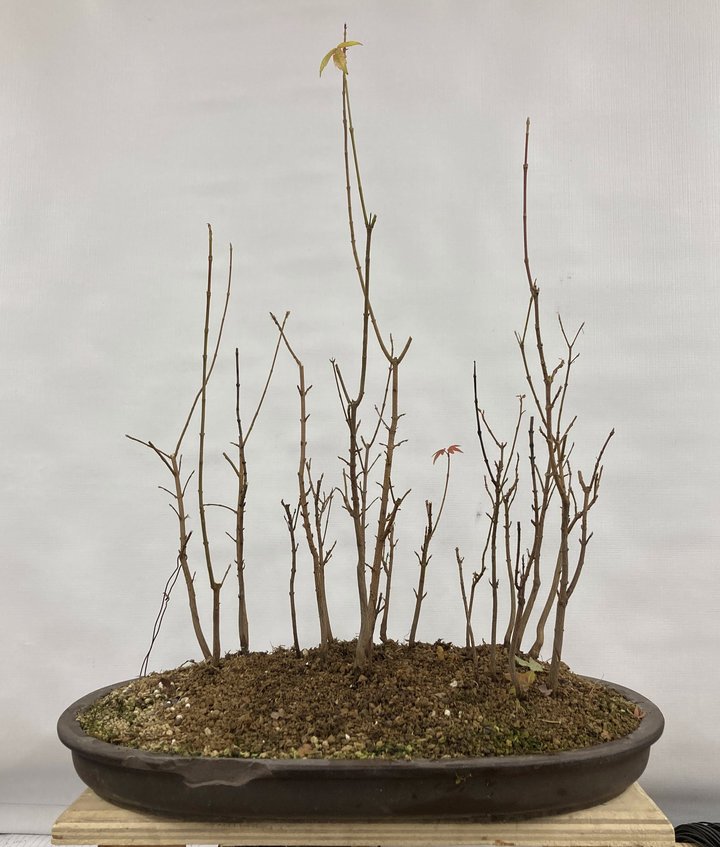Spring is a good time to work on larches, as they tend be rather full when they wear their dense foliage.
Here is the tree coming out of cold storage
First I cut the trunk section above a small branch that I raised last year to become the new apex. A few branches were wired and the banch junctions are reduced to two.
After styling
...
This small Japanese maple was grown from a cutting and is in its early stage of development. I grafted a small branch near the ground to help thicken its nebari.
A channel is cut into the trunk.
The graft is held in place with a 2 mm aluminum wire.
...
I started this Japanese Black Pine from a seed 8 years ago. This tree is becoming too dense and the time has come to make some corrections.
First, needles on top and bottom of the branches are plucked. Needles on the sacrifice branches are also removed to let air and light reach the inside of the tree.
Branches are wired downwards.
...
This hawthorn was repotted and defoliated last year. It is ramifying but still remains early in its development. Only a few branches are cut and repositioned using wire.
The hook technique A wire can be anchored using a hook instead of wiring to anoher branch.
3 branches junction A branch is removed to eliminate a three-branch junction.
...
This Buckthorn will make a big bunjin with over 1 meter tall. Only a few branches will be kept in the end to create a minimalistic canopy. From now on I will barely use wire and use directional pruning to exacerbate the geometric growth pattern of this species.
Before wiring.
After wiring.
A stub near the apex is removed.
...
This Japanese maple is an Acer palmatum ssp. dissectum var ‘Tamukeyama’ and was bought in 2014 in a big renovation store at a discount price. In fall, all branches were cut back close to the trunk.
Here is what the same tree looks like 6 years later:
Ramification techniques Branch ramification is promoted by the means of the following 4 techniques or principles:
...
These now 2-years-old white birches were planted together in 2020. Their trunks are now fusing together and I wired them to evoke an isolated clump at the edge of a forest.
Here are two pairs of before-after shots.
...
These now 2-years-old ginkgo bilobas were planted together in 2020. Their trunks are now fusing together and I wired them to illustrate the typical flame shape that characterize the old ginkgos.
Here are three pairs of before-after shots.
...
After their first growing season as a forest, the trees have grown well. They must now be cut back in order to define only one clear leader per trunk. Some of the smaller trunks died and are removed. They will be replaced in the future years with cuttings taken from the taller trees. This will help increase the size diversity in the composition. Only one trunk is repositioned using a guy-wire.
...
